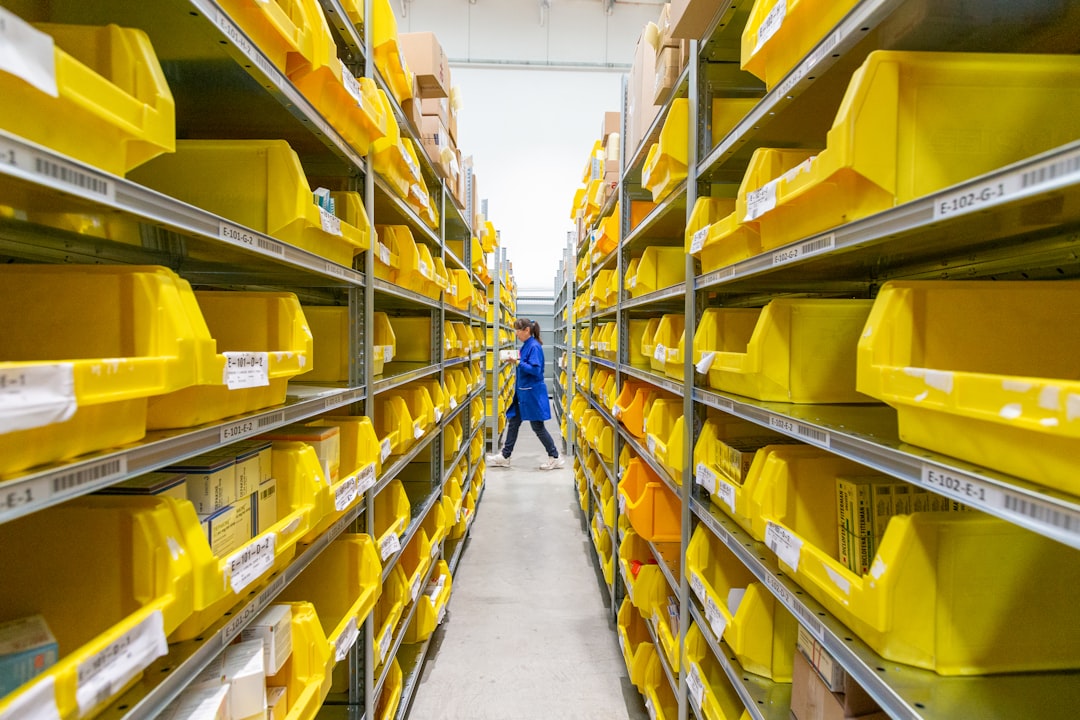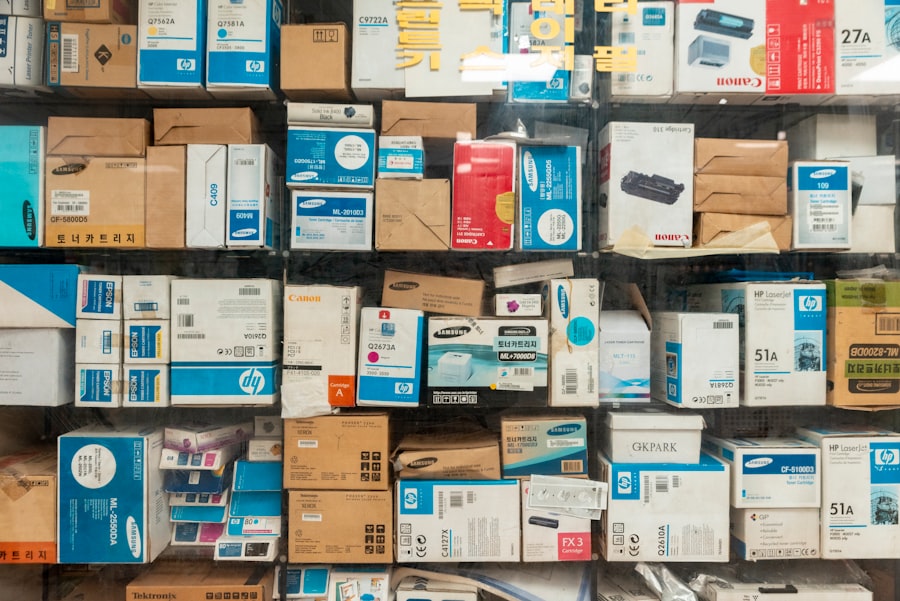How to Start an Amazon Wholesale Selling Business from Home

Amazon wholesale selling is a business model where sellers purchase products in bulk from manufacturers or distributors and then sell them on Amazon for a profit. This can be a lucrative venture for entrepreneurs looking to start their own online business, as Amazon provides a platform with millions of potential customers. However, before diving into the world of Amazon wholesale selling, it is important to understand the basics of the process.
One of the key aspects of Amazon wholesale selling is finding profitable products to sell. This requires conducting thorough market research to identify niches that have high demand and low competition. Additionally, setting up a legal and tax-compliant business is crucial to avoid any legal issues down the line. Finding reliable suppliers who can provide quality products at competitive prices is also essential for success. Once the products are sourced, creating an Amazon seller account and optimizing product listings are important steps to attract customers and drive sales. Pricing strategies, inventory management, marketing efforts, and scaling the business are also crucial elements to consider.
Key Takeaways
- Conduct market research to identify profitable niches and products for your Amazon wholesale selling business.
- Set up your business legally and consider tax implications before starting.
- Find reliable suppliers to source products for your Amazon store.
- Create an Amazon seller account and optimize your product listings with compelling descriptions and titles.
- Manage your inventory, track sales, and restock products to ensure profitability and growth.
Conducting Market Research: Identifying Profitable Niches and Products
Market research is a critical step in the process of Amazon wholesale selling. It involves analyzing market trends, customer preferences, and competitor analysis to identify profitable niches and products. By understanding what customers are looking for and what competitors are offering, sellers can make informed decisions about which products to sell on Amazon.
One tip for identifying profitable niches is to look for products that have a high demand but low competition. This means finding products that are popular among customers but have fewer sellers offering them on Amazon. This can be done by using tools such as Jungle Scout or Helium 10, which provide data on product demand and competition levels.
Another tip is to consider selling products within a specific niche or category. By focusing on a specific niche, sellers can establish themselves as experts in that area and attract customers who are specifically looking for products within that niche. This can help differentiate the business from competitors and increase the chances of success.
Personally, I have had success with market research when I decided to sell eco-friendly home products on Amazon. I noticed a growing trend of customers looking for sustainable and environmentally-friendly products, so I conducted market research to identify specific products within this niche that had high demand and low competition. By focusing on this niche, I was able to attract customers who were specifically looking for eco-friendly home products and establish my brand as a trusted source for these types of products.
Setting Up Your Amazon Wholesale Selling Business: Legal and Tax Considerations
When starting an Amazon wholesale selling business, it is important to consider the legal and tax implications. This includes registering the business, obtaining necessary licenses and permits, and understanding the tax obligations.
One legal consideration is choosing the right business structure. This can be a sole proprietorship, partnership, limited liability company (LLC), or corporation. Each structure has its own advantages and disadvantages in terms of liability protection, tax implications, and ease of setup. It is important to consult with a legal professional or accountant to determine the best structure for your specific situation.
Tax considerations are also important to understand. Sellers are responsible for collecting and remitting sales tax on their Amazon sales, depending on the state they are operating in. It is crucial to research and comply with the tax laws in your jurisdiction to avoid any penalties or legal issues.
Personally, I faced a tax issue when I first started my Amazon wholesale selling business. I was not aware of the sales tax obligations and did not collect or remit sales tax on my sales. This resulted in a notice from the tax authorities and I had to pay back taxes along with penalties. It was a costly lesson, but it taught me the importance of understanding and complying with tax laws from the beginning.
Finding Reliable Suppliers: Sourcing Products for Your Amazon Store
Finding reliable suppliers is a crucial aspect of Amazon wholesale selling. Sellers need to ensure that they are sourcing quality products at competitive prices in order to attract customers and make a profit.
One tip for finding reliable suppliers is to attend trade shows or industry events where manufacturers and distributors showcase their products. This allows sellers to meet suppliers in person, ask questions, and establish a relationship. Building a strong relationship with suppliers is important as it can lead to better pricing, faster shipping times, and access to exclusive products.
Another tip is to use online supplier directories or platforms such as Alibaba or Thomasnet. These platforms connect sellers with suppliers from around the world and provide information on their products, pricing, and customer reviews. It is important to thoroughly vet suppliers before making a purchase by reading reviews, requesting samples, and asking for references.
Personally, I had an issue with a supplier when I received a shipment of products that were of poor quality. The supplier had promised high-quality products but did not deliver on their promise. I had to negotiate with the supplier for a refund or replacement, which was a time-consuming process. This experience taught me the importance of thoroughly vetting suppliers and establishing clear expectations before making a purchase.
Creating an Amazon Seller Account: Registering and Listing Your Products
Creating an Amazon seller account is a necessary step to start selling on the platform. This involves registering as a seller, providing necessary information, and listing products for sale.
To create an Amazon seller account, sellers need to choose between an individual seller account or a professional seller account. An individual seller account is suitable for those who plan to sell fewer than 40 items per month, while a professional seller account is recommended for those who plan to sell more than 40 items per month. Each account type has its own fees and benefits, so it is important to choose the right one for your business.
Once the account is set up, sellers can start listing their products on Amazon. It is important to optimize product listings by providing accurate and compelling descriptions, high-quality images, and relevant keywords. This helps improve visibility in search results and attract potential customers.
Personally, I faced an issue with my Amazon seller account when I accidentally listed a product that was prohibited by Amazon’s policies. This resulted in my account being temporarily suspended until I resolved the issue. I had to contact Amazon’s seller support, provide the necessary documentation, and remove the prohibited product from my listings. It was a stressful experience, but it taught me the importance of thoroughly understanding and complying with Amazon’s policies.
Optimizing Your Product Listings: Writing Compelling Descriptions and Titles

Optimizing product listings is crucial for attracting customers and driving sales on Amazon. This involves writing compelling descriptions and titles that accurately represent the product and appeal to potential buyers.
One tip for writing compelling descriptions is to highlight the key features and benefits of the product. This helps customers understand what they will be getting and how it can benefit them. It is important to use clear and concise language, avoid jargon or technical terms, and focus on the value proposition of the product.
Another tip is to use relevant keywords in the product title and description. Keywords are words or phrases that customers use when searching for products on Amazon. By including relevant keywords in the listing, sellers can improve their visibility in search results and attract more potential customers.
Personally, I had success with optimizing my product listings when I started using customer reviews as social proof in my descriptions. I included snippets of positive reviews that highlighted the quality and value of the product. This helped build trust with potential customers and increased conversion rates.
Pricing Your Products: Strategies for Competitive Pricing and Profitability
Pricing strategy is an important aspect of Amazon wholesale selling. Sellers need to find a balance between competitive pricing to attract customers and profitability to make a profit.
One pricing strategy is to research the prices of similar products on Amazon and set a competitive price. This involves analyzing the prices of competitors and adjusting the price accordingly. It is important to consider factors such as product quality, brand reputation, and customer reviews when determining the price.
Another strategy is to offer discounts or promotions to attract customers. This can be done by offering a percentage off the regular price, bundling products together, or offering free shipping. These promotions can help increase sales and attract new customers.
Personally, I had success with a pricing strategy when I decided to offer a limited-time discount on one of my products. The discount was promoted through social media and email marketing, which resulted in a significant increase in sales during the promotional period. This strategy helped me attract new customers and increase brand awareness.
Managing Your Inventory: Tracking Sales and Restocking Products
Inventory management is crucial for Amazon wholesale selling. Sellers need to track their sales, monitor inventory levels, and restock products in a timely manner to avoid stockouts or overstocking.
One tip for managing inventory is to use inventory management software or tools. These tools help sellers track sales, monitor inventory levels, and generate reports on product performance. By using these tools, sellers can make data-driven decisions about when to restock products and how much inventory to keep on hand.
Another tip is to establish reorder points and safety stock levels. Reorder points are the inventory levels at which sellers should place an order with their suppliers to restock products. Safety stock levels are additional inventory kept on hand to account for unexpected increases in demand or delays in shipping. By setting these levels, sellers can ensure that they have enough inventory to meet customer demand without overstocking.
Personally, I faced an inventory management issue when I underestimated the demand for one of my products during a peak sales period. I ran out of stock and had to wait for the next shipment from my supplier, which resulted in lost sales and disappointed customers. This experience taught me the importance of accurately forecasting demand and maintaining sufficient inventory levels.
Marketing Your Amazon Wholesale Selling Business: Building Your Brand and Driving Sales
Marketing is a crucial aspect of Amazon wholesale selling. Sellers need to build their brand, attract customers, and drive sales through various marketing efforts.
One tip for marketing your Amazon wholesale selling business is to build a strong brand presence. This can be done by creating a professional logo, designing a visually appealing storefront, and using consistent branding across all marketing channels. By establishing a strong brand, sellers can build trust with customers and differentiate themselves from competitors.
Another tip is to use social media and email marketing to promote products and engage with customers. Social media platforms such as Facebook, Instagram, and Twitter can be used to showcase products, share customer reviews, and run promotions. Email marketing allows sellers to communicate directly with customers, share product updates, and offer exclusive discounts.
Personally, I had success with marketing my Amazon wholesale selling business when I started collaborating with influencers in my niche. I reached out to popular bloggers and social media influencers who had a large following of potential customers. By sending them free samples of my products and asking for honest reviews or endorsements, I was able to reach a wider audience and increase brand awareness.
Scaling Your Business: Expanding Your Product Line and Reinvesting Profits
Scaling your Amazon wholesale selling business is an important step towards long-term success. This involves expanding your product line, reinvesting profits, and continuously improving your business operations.
One tip for scaling your business is to expand your product line by adding complementary products or variations of existing products. This allows you to cater to a wider range of customer preferences and increase the chances of repeat purchases. It is important to conduct market research and analyze customer feedback to identify new product opportunities.
Another tip is to reinvest profits back into the business. This can be done by purchasing more inventory, improving product packaging or branding, investing in marketing efforts, or hiring additional staff. By reinvesting profits, sellers can fuel the growth of their business and take advantage of new opportunities.
Personally, I had success with scaling my Amazon wholesale selling business when I reinvested profits into improving my product packaging and branding. I hired a graphic designer to create professional packaging designs and updated my product listings with high-quality images. This helped improve the perceived value of my products and attract more customers.
In conclusion, Amazon wholesale selling can be a profitable venture for entrepreneurs looking to start their own online business. However, it is important to understand the basics of the process and consider various factors such as market research, legal and tax considerations, finding reliable suppliers, creating an Amazon seller account, optimizing product listings, pricing strategies, inventory management, marketing efforts, and scaling the business. By following these tips and learning from personal anecdotes, sellers can increase their chances of success in the competitive world of Amazon wholesale selling.
If you’re interested in starting an Amazon wholesale selling business from the comfort of your own home, you may also find this article on “The Benefits of E-commerce for Small Businesses” helpful. It explores how small businesses can leverage the power of e-commerce to reach a wider audience, increase sales, and streamline operations. Check it out here.
FAQs
What is an Amazon wholesale selling business?
An Amazon wholesale selling business involves purchasing products in bulk from manufacturers or distributors and selling them on Amazon at a higher price to make a profit.
What are the benefits of starting an Amazon wholesale selling business from home?
Starting an Amazon wholesale selling business from home allows you to work from the comfort of your own home, have flexible working hours, and potentially earn a significant income.
What are the requirements to start an Amazon wholesale selling business?
To start an Amazon wholesale selling business, you will need to have a registered Amazon seller account, a tax ID number, a business bank account, and a reliable internet connection.
How do I find products to sell on Amazon?
You can find products to sell on Amazon by researching popular products in your niche, attending trade shows, contacting manufacturers and distributors, and using Amazon’s product research tools.
How do I price my products on Amazon?
To price your products on Amazon, you should research the prices of similar products, factor in your costs, and consider your profit margin. You can also use Amazon’s pricing tools to help you set competitive prices.
What are the best practices for managing an Amazon wholesale selling business?
Some best practices for managing an Amazon wholesale selling business include keeping accurate records, providing excellent customer service, optimizing your product listings, and staying up-to-date with Amazon’s policies and guidelines.





